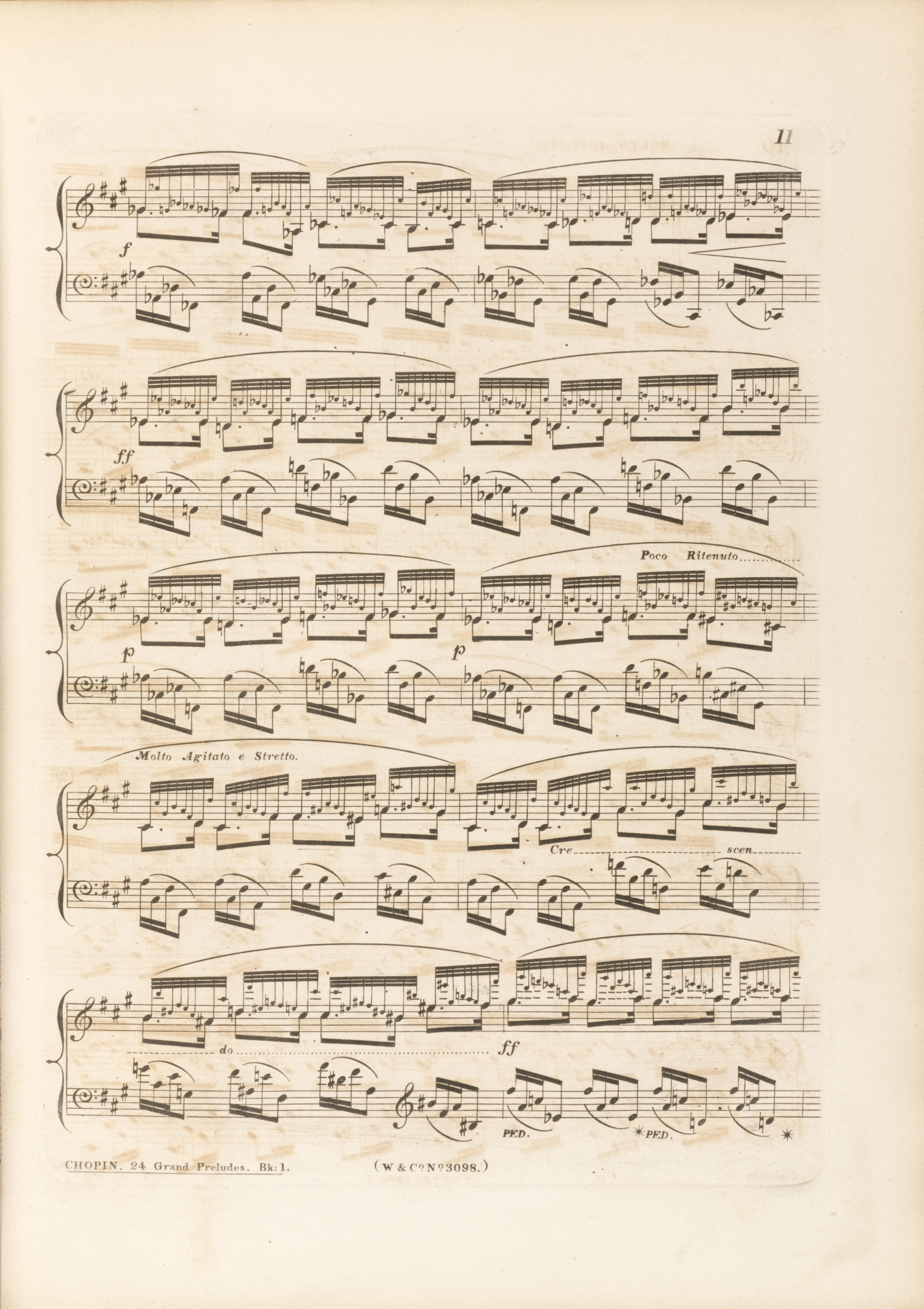Op. 2, Variations in B♭ major
Op. 10, 12 Etudes
Op. 11, Concerto in E minor
Op. 21, Concerto in F minor
Op. 22, Polonaise in E♭ major
Op. 24, 4 Mazurkas
Op. 25, 12 Etudes
Op. 26, 2 Polonaises
Op. 27, 2 Nocturnes
Op. 28, 24 Preludes
Op. 30, 4 Mazurkas
Op. 35, Sonata in B♭ minor
Op. 50, 3 Mazurkas
Op. 63, 3 Mazurkas
Op. 64, 3 Waltzes
(Op. 4), Sonata in C minor




Op. 28 No. 8, Prelude in F♯ minor
The  (cautionary?) present in all sources before d1 in the 3rd L.H. figure is almost certainly a remaining part of the initial notation of the quavers in the 1st half of the bar, which were written down as d
(cautionary?) present in all sources before d1 in the 3rd L.H. figure is almost certainly a remaining part of the initial notation of the quavers in the 1st half of the bar, which were written down as d 1. After the notation had been changed, the
1. After the notation had been changed, the  was no more necessary, hence we omit it in the main text. In the same 3rd L.H. figure, one can see in A a crossed-out
was no more necessary, hence we omit it in the main text. In the same 3rd L.H. figure, one can see in A a crossed-out  before c2. The accidental is not necessary, yet, due to c
before c2. The accidental is not necessary, yet, due to c 3 in the R.H., we give it in the main text. It was most probably for the same reason that it was also added in FE2 (→EE), also in the 4th figure. EE repeated in the 4th figure also the
3 in the R.H., we give it in the main text. It was most probably for the same reason that it was also added in FE2 (→EE), also in the 4th figure. EE repeated in the 4th figure also the  before d1.
before d1.
Compare the passage in the sources »
category imprint: Editorial revisions; Corrections & alterations; Source & stylistic information
issues: EE revisions, Corrections in A, Cautionary accidentals, Deletions in A, Enharmonic corrections, FE revisions
notation: Pitch

